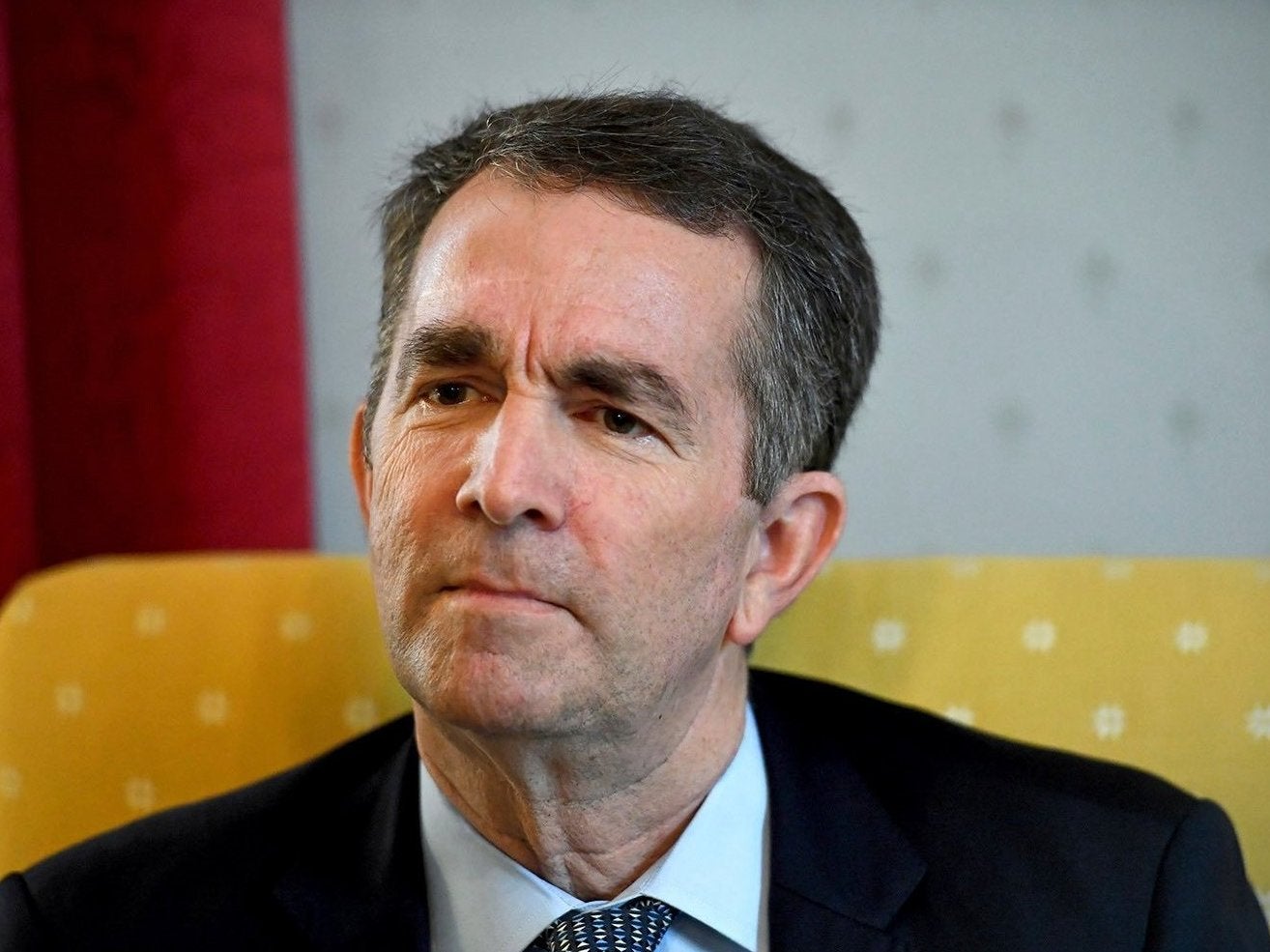Police apologise for sending officers in blackface to impersonate black drug dealers
University professor says operation demonstrates failure to recruit black officers

One night in February 1993, Frankie Caruso and another white Baton Rouge detective darkened their faces to impersonate black drug dealers, as part of what was then characterised as a successful sting operation.
Twenty-six years later, a photo of the two officers has emerged from an old police yearbook, with the caption “Soul brothers”. The blackface operation, which current officials said had been approved by the Police Department, drew swift condemnation this week from the city’s mayor and its police chief.
“Blackface photographs are inappropriate and offensive,” Police Chief Murphy J Paul Jr said in a statement on Monday. “They were inappropriate then and are inappropriate today. The Baton Rouge Police Department would like to apologise to our citizens and to anyone who may have been offended by the photographs.”
Reached by phone, Mr Caruso, who retired in 2015 after more than 33 years with the department, however, was unapologetic. He said that while he understood racism better today — and that in 1993 he did not know the term or history of blackface — he did not think the disguise was inappropriate.
“We did nothing wrong,” Mr. Caruso said. “We did a good operation. We made a lot of arrests in a neighborhood that was needing attention. That’s all there is to it.”
A national debate about the practice of blackface has erupted in recent weeks after a racist photograph surfaced on a medical school yearbook page belonging to Ralph Northam, now the governor of Virginia. Mr Northam denied appearing in that photo, but admitted to darkening his face another time.
With roots in demeaning minstrel-show traditions that date to the 1830s, blackface has a long history in American society.
At least one other report exists of a police department approving a law enforcement operation in blackface. United Press International reported in 1990 that white police officers in Naples, Florida, used blackface to pretend to be black crack cocaine dealers.
Robert J Louden, a professor emeritus of criminal justice and homeland security at Georgian Court University in New Jersey, said that he did not believe the practice is or was widespread. That’s in part because blackface could put undercover officers in danger if a potential drug buyer notices the disguise.
“It’s foolish and it’s dangerous,” he said.
Jeannette Eileen Jones, a professor of history and ethnic studies at the University of Nebraska, Lincoln, said it was a symptom of a failure to recruit more black officers. Baton Rouge, Louisiana’s capital, is among the last cities in the state to remain under a federal decree intended to decrease discrimination against women and black applicants for the police and fire departments, The Advocate newspaper reported last year.
“You’re claiming to take on someone else’s racial traits, and given the history of blackface in the United States and its origins, I can’t understand why anyone thinks that’s OK,” Ms. Jones said. “It is simply about mocking and exaggerating and stereotyping an entire group of people.”
On Monday evening, Sharon Weston Broome, the mayor-president of Baton Rouge, said in a statement that blackface “is more than just a costume” and that it “invokes a painful history in this country and it is not appropriate in any situation.”
“While this may have been department-approved 25 years ago, that does not make it right,” she said.
The plan on the night in question in February 1993 was to have two white detectives, including Mr. Caruso, pretend to deal crack cocaine in a predominantly black neighborhood in Baton Rouge that had a high rate of street-level drug crime. Mr. Caruso said the narcotics team did have two black detectives, but their faces were known in the neighborhood.
The sting operation was also detailed in a 1993 article in The Advocate.
Mr Caruso likened using the disguise to preparing for other undercover assignments, like dressing as a biker or a prostitute.
Asked if he thought he was stereotyping black people, he said that he did not think he was, and that he was not intending to hurt anyone.
“We dressed up for the assignment that we were working,” he said.
In 2007, a photo of the two detectives was published in a police yearbook, according to a police spokesman.
Chief Paul said he found out about the photograph this week after it started circulating on social media.
“Today, we would not allow our officers to wear blackface in an official capacity under any circumstances,” Chief Paul said in the statement.
He said the “department is bound by the Louisiana Law Enforcement Bill of Rights, which places a timeline on administrative investigations related to officer conduct.”
One of the two officers is still with the department, the police spokesman said. He said the Baton Rouge police did not plan to further investigate the photograph or discipline the officer.
Mr Caruso said that “in today’s times, people are trying to look at anything that they can to make a race issue out of something.”
So, would he use blackface in a drug operation today?
“Because of the way everything in the world today is with race, and everybody talking about race relations and blackface, and all these things that they’re talking about right now,’’ he said, “I probably would not do it today.”
The New York Times
Join our commenting forum
Join thought-provoking conversations, follow other Independent readers and see their replies
0Comments